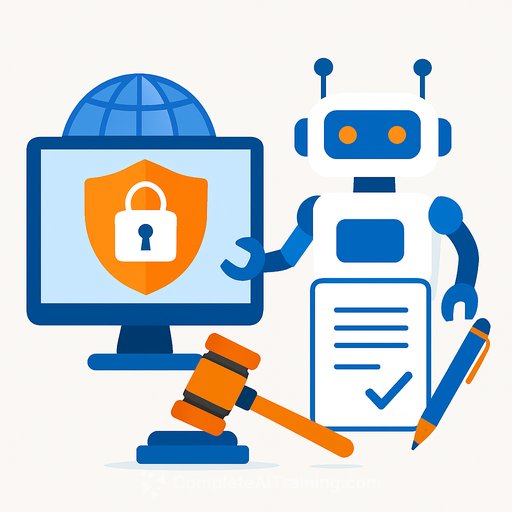China revises Cybersecurity Law to bolster AI development
China has approved revisions to its Cybersecurity Law that put AI squarely in focus. The update supports basic AI research, algorithm development, and large-scale infrastructure for training data and compute. It also tightens risk oversight, expands penalties, and coordinates with related data laws. The amended law takes effect Jan 1 next year after approval at the 18th session of the 14th NPC Standing Committee in Beijing.
Key changes at a glance
- State support for AI: Backing for core research, algorithms, training data resources, and computing power.
- Governance upgrades: Stronger AI ethics rules, risk monitoring, assessments, and safety oversight to promote "sound development."
- AI in cybersecurity: Encourages using AI and other new tech to raise protection levels.
- Tighter liability: Higher penalties and broader extraterritorial application for security violations.
- Legal alignment: Closer integration with the Data Security Law and the Personal Information Protection Law (PIPL).
Why this matters for engineering teams
If you build or run AI systems that touch China-based data, users, or infrastructure, compliance expectations are rising. Ethics and risk controls shift from "nice to have" to non-negotiable. Expect scrutiny on data provenance, model safety, and security-by-design across your stack.
Practical steps to get ahead
- Data governance: Classify data, document provenance, minimize personal data, and define retention and deletion workflows. Set clear rules for China-related data flows and cross-border transfers.
- Training data hygiene: Track sources, licenses, and consent. Filter sensitive content. Maintain dataset cards and change logs.
- Model risk controls: Run pre-release and ongoing evaluations for safety, bias, jailbreaks, and data leakage. Establish incident response playbooks for model behavior and data exposure.
- Security engineering: Threat-model your pipelines, protect model weights and artifacts, harden APIs, enforce rate limits, and add anomaly detection.
- Monitoring and traceability: Log inputs/outputs with privacy safeguards, detect drift, and version models, prompts, and datasets.
- Compliance operations: Map data flows, ensure consistency with PIPL and the Data Security Law, and assign accountable owners for audits.
- Vendors and partners: Bake security, audit rights, and breach notification into contracts. Verify their data sourcing and eval practices.
- Extraterritorial exposure: If you serve users in China or process their data, assume enforcement reach. Prepare local points of contact and exportable audit artifacts.
Penalties and enforcement signal
The law refines liability for harms to network operation security, product and service security, and information security. Penalties increase, with extended reach beyond borders where applicable. In short: bake compliance and safety into your roadmap now, not after an incident.
How it fits with existing laws
The revisions are built to work alongside the Data Security Law and PIPL. If your product handles data tied to China, align controls with both frameworks early in design and deployment.
Data Security Law (English translation)
Personal Information Protection Law (English translation)
What to expect next
Regulators will likely focus on risk assessments, dataset provenance, and measurable safety practices. Teams that can show evaluations, audit trails, and fast incident response will be in a stronger position. State media framed the change as meeting new cybersecurity situations, tightening legal liability, and improving alignment with related laws.
If your team needs a skills refresh on practical AI engineering and safety, you can scan focused training options here: Latest AI courses.
Your membership also unlocks:






